5th Nov 2021
A Deep Dive Into The Rolex Submariner
by Adrian Hailwood
How a tool watch for a niche sport became a global icon.
Into The Deep

In 1956 the Palme d'Or at the Cannes Film festival was won by a documentary, a feat that would not be repeated for almost another 50 years. The film was ‘The Silent World’ by Jacques Cousteau a visual adaptation of his book of the same name detailing his dive expeditions. Cousteau had been entrancing film-goers since the mid-1940s with his short films on undersea life and the weary post-war audiences lapped it up. This was the final terrestrial frontier and every bit as alien as space-based science fiction. Into the 1960s as the Space Race took off, undersea exploration remained firmly in the public eye with the widely publicised expeditions of the US Navy’s SEALAB.
A Big Fish in a Small Pond
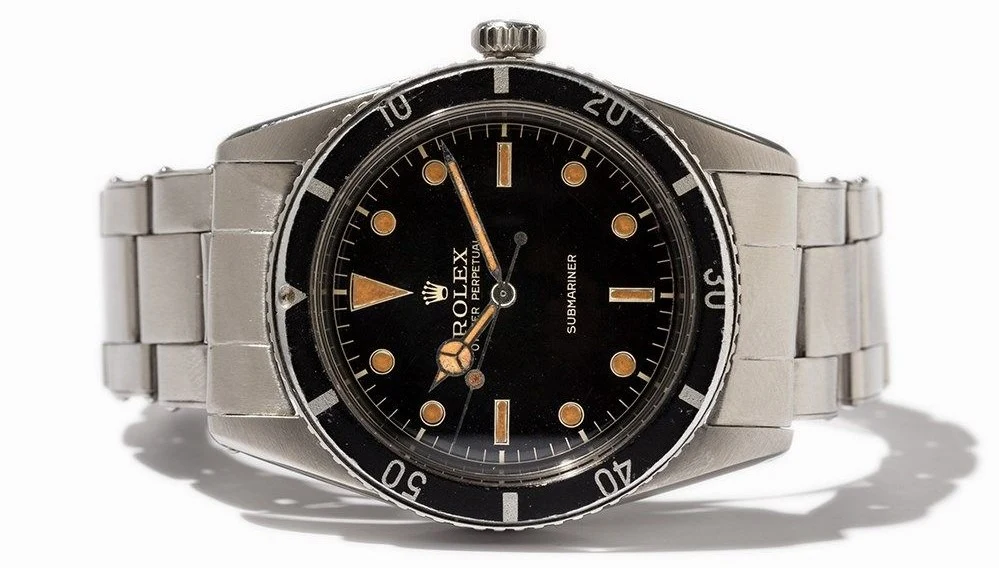
If diving in the ‘50s and ‘60s was popular escapism, with dreams of cities on the seabed, the actual number of divers in the early days was very low. The invention of the Aqualung in 1943 freed divers to spend longer underwater, but in the 1950s diving was an exploit for the intrepid, often reckless, mavericks. Dive training for the public was minimal, a sink-or-swim approach from ex-military instructors, and equipment basic, or even homemade. It was into this market that Rolex, along with Blancpain and Zodiac, launched their diving timepieces, and yet 70yrs later, the Rolex Submariner stands as the most recognised and plagiarised watch in the world. Much of this is down to Rolex’s exceptional marketing prowess. The initial product was not really better than the competition, but the marketing was.
Existing Brand Recognition
While the early number of divers was small the popularity of undersea exploration on screen and in print meant that the number of wannabe divers was much larger. Rolex had the reach and heft as a company to get watches into the hands of more of these buyers than their competition. Other brands may have targeted divers specifically but Rolex, especially with their ‘If you were diving here tomorrow’ campaign reached out to all those hypothetical divers.
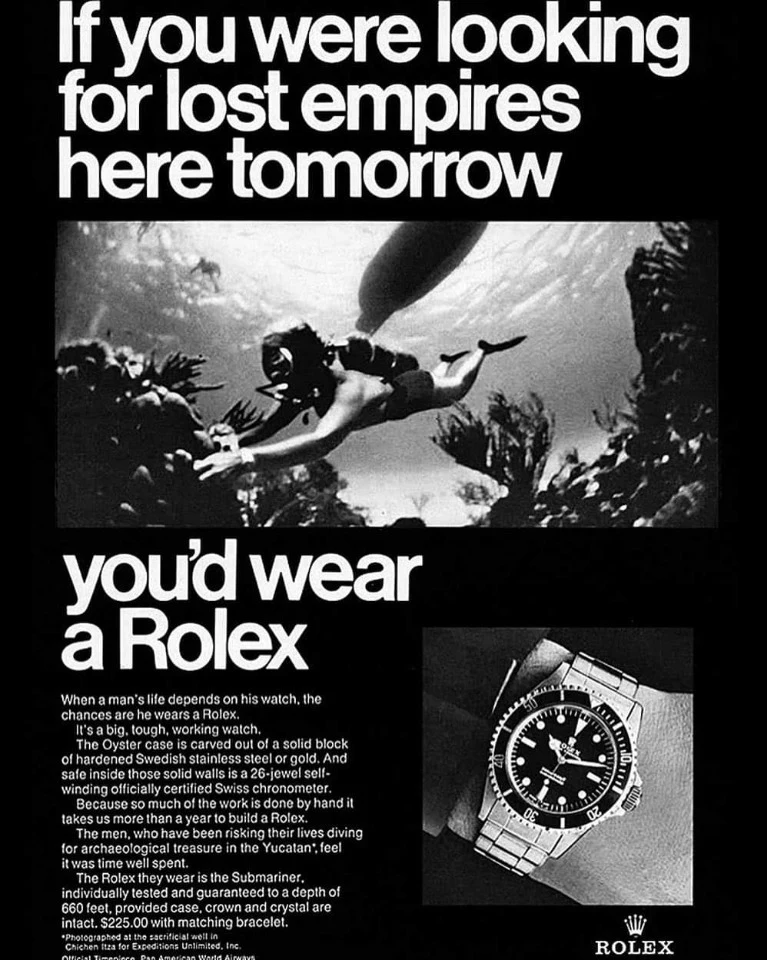
Waterproofness
Water is bad news for watches if it gets inside. At best it can be an expensive service, at worst, the movement can become a rusted write-off. This paranoia over water ingress is what drives watch buyers to believe they cannot swim in a 30m resistant watch, need 300m before they put their head under, and will still take it off before they go in the shower. Back in the 1950s, Rolex’s watch was not the most watertight out there. U.S. Navy evaluation showed that both the Blancpain Fifty Fathoms and the Enicar Seapearl 600 worked better and neither had a screw-down crown, (which, of course only works if you remember to screw it down.). What really mattered was public perception and Rolex had already captured the world’s imagination when their Oyster-cased watch accompanied Mercedes Gleitze on her 1927 cross-channel ‘vindication’ swim. Add to this the psychological effect of tightening the crown by hand and you can understand how Rolex won the mind games.

The Bond Effect
We may dismiss it as a little cheesy, but do not underestimate the power of Bond. You can be sure that Omega has paid a huge sum of money to be 007’s wristwear of choice, and while there is no evidence that Rolex paid for their product placement, they certainly capitalised on it. It helped that Fleming himself wore a Rolex Explorer and wrote that Bond wore one too both as watch and knuckleduster. Connery wore a 6538 ‘Big Crown’ Submariner in his first 4 outings as Bond and despite the fact that a Breitling Top Time became the first ‘gadget watch’ and star of the show in Thunderball, Rolex turned a still from the film into an ad for the Sub.
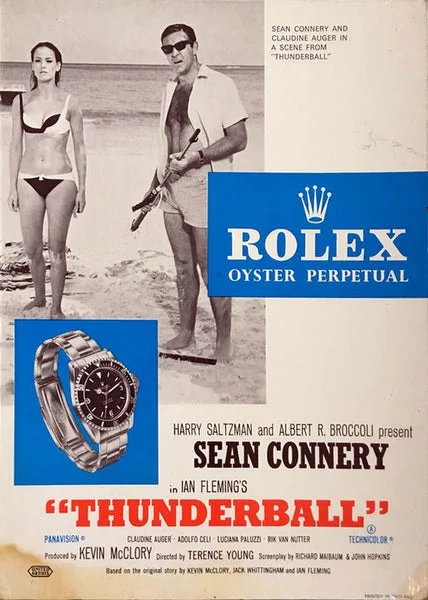
The first Rolex to do anything but tell the time was Roger Moore’s 5513 Submariner/buzzsaw/magnet. An iconic role and probably the one that did the most to push the Submariner out to a wider audience. The suggestion that a dive watch could be not only a daily wearer but also a dress watch was revolutionary for the time and one that Rolex themselves cheekily referred to in their advertising.
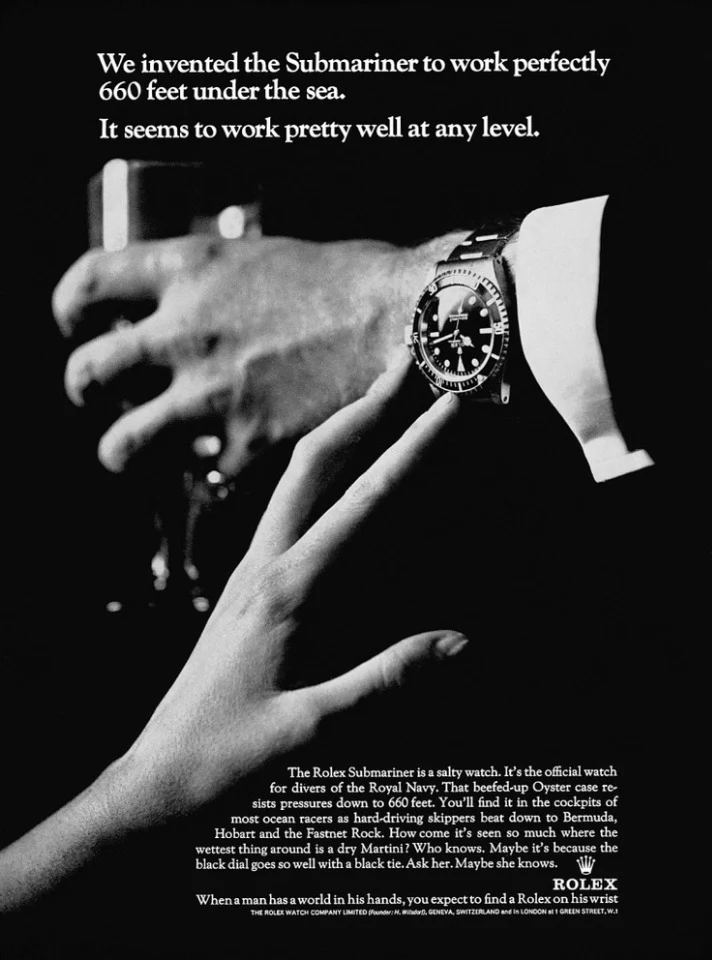
Steel Luxury Sports
It may be no coincidence that the 1973 release of ‘Live and Let Die’ saw the beginning of the Submariner’s transition from a tool watch to a luxury accessory. The previous year had seen the launch of the Audemars Piguet Royal Oak, an audaciously expensive steel sports watch. Rolex, with their tuxedo-paired Submariner, had their own version of sports-luxe. Not as slim, nor as elegant but endorsed by the world’s no.1 spy, far more capable at depth and pretty handy across your knuckles in a fight…apparently. Of course, it helped that the Sub was more than 6x less expensive than the Royal Oak.
Steady as she goes
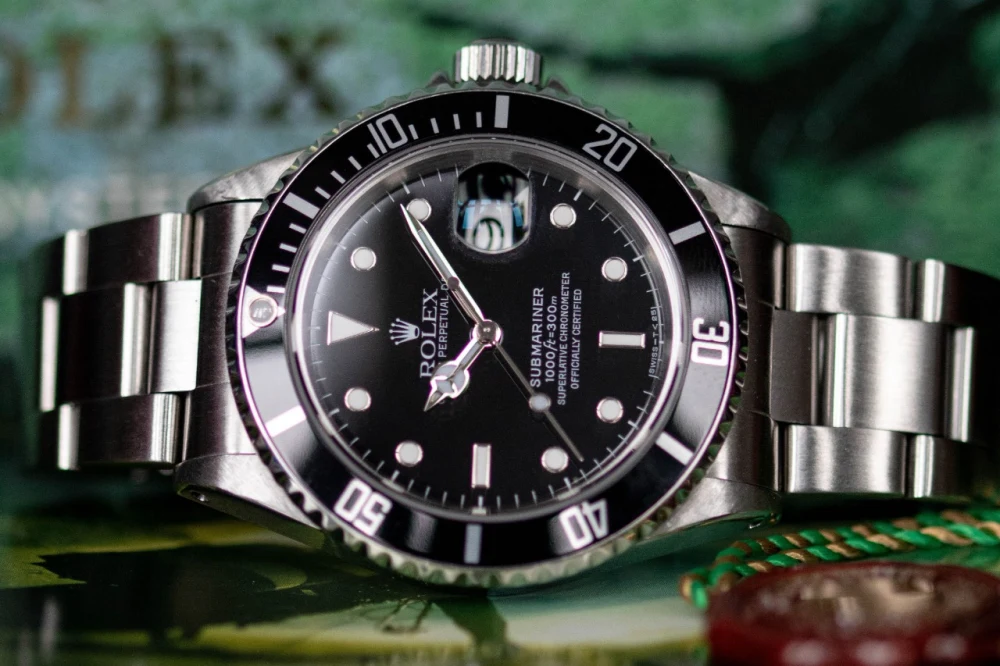
As the ‘70s rolled into the ‘80s, quartz took over and watch brands engaged in a suicidal ‘race to the bottom’ price-wise. Design ebbed and flowed to follow fashion, with some hits and plenty of misses. All this time, Rolex kept on doing their thing. Yes, they did Oysterquartz, but it never found a home inside the brand hero that the Submariner represented. When the dust settled at the start of the ‘90s and mechanical became cool again, Rolex had the brand recognition and the consistency to claim the top spot, even if Bond had since shifted allegiance to Omega. If quartz was now dismissed as cheap, Rolex could easily position themselves as luxury.
We All Want What We Can’t Have

This all brings us neatly up to the present; the Rolex Sub with is simple but effective design in an unbroken line for over 70 years, packed full of incremental improvements to the case, bracelet, dial, and movement, and completely unobtainable at retail anywhere. Whether intentional or not, the excess of demand over supply is a canny commercial move. As the watch collecting hobby grows, new entrants look around to learn what is desirable and then follow the herd. Owning a Sub no longer is a sign of a devil-may-care attitude to deep water, it is a sign that you had enough cash to buy one in the secondary market or enough connections to get one at retail, both powerful social signals. This is pure game theory. The most popular watch in a category becomes harder to get, which makes it more popular, and the cycle continues. Everything else becomes a ‘settle for’. This is psychology, not horology, and explains why, despite the doom-mongers, there is no likelihood that the bubble will burst.

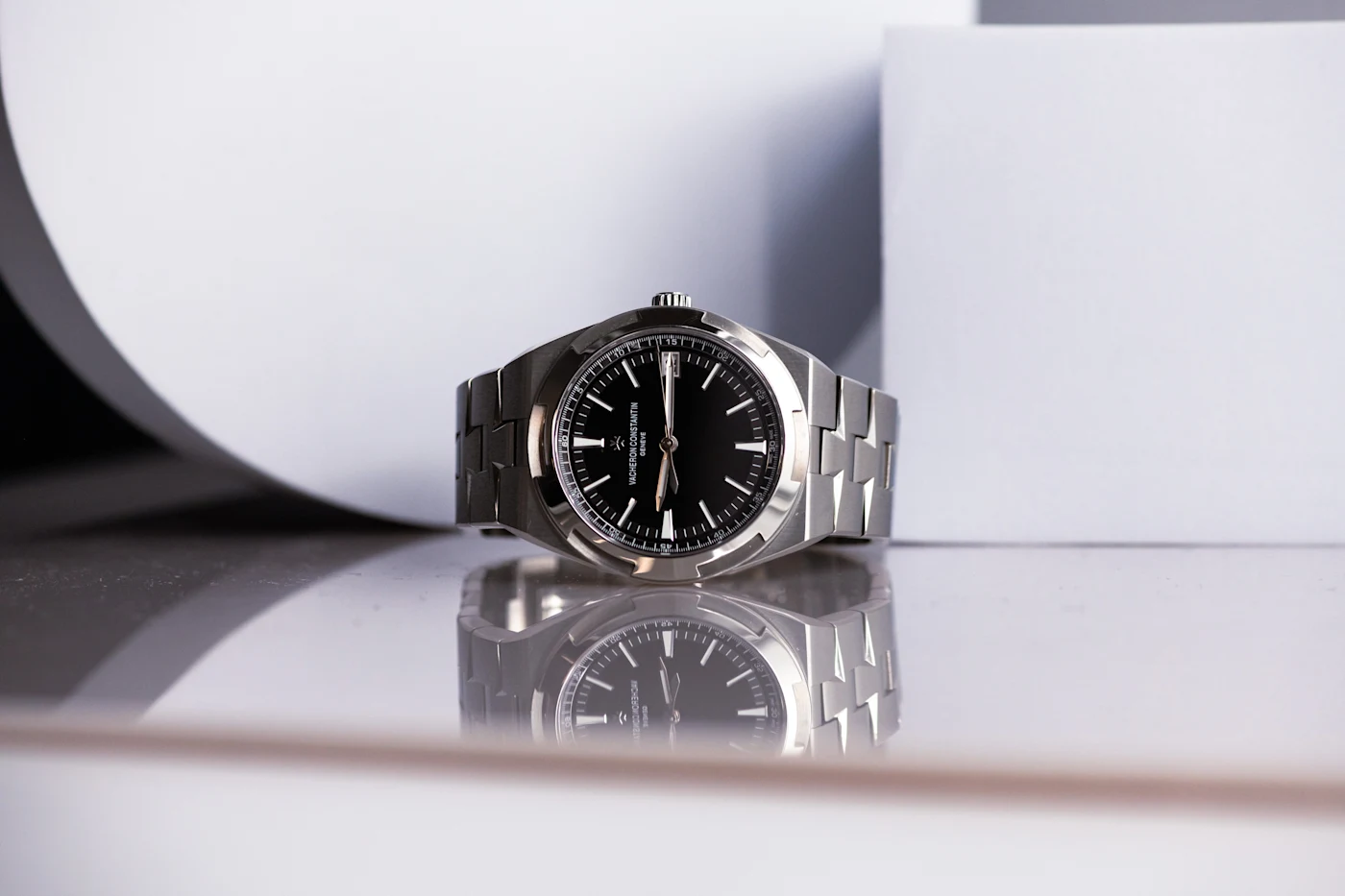




Have your say!